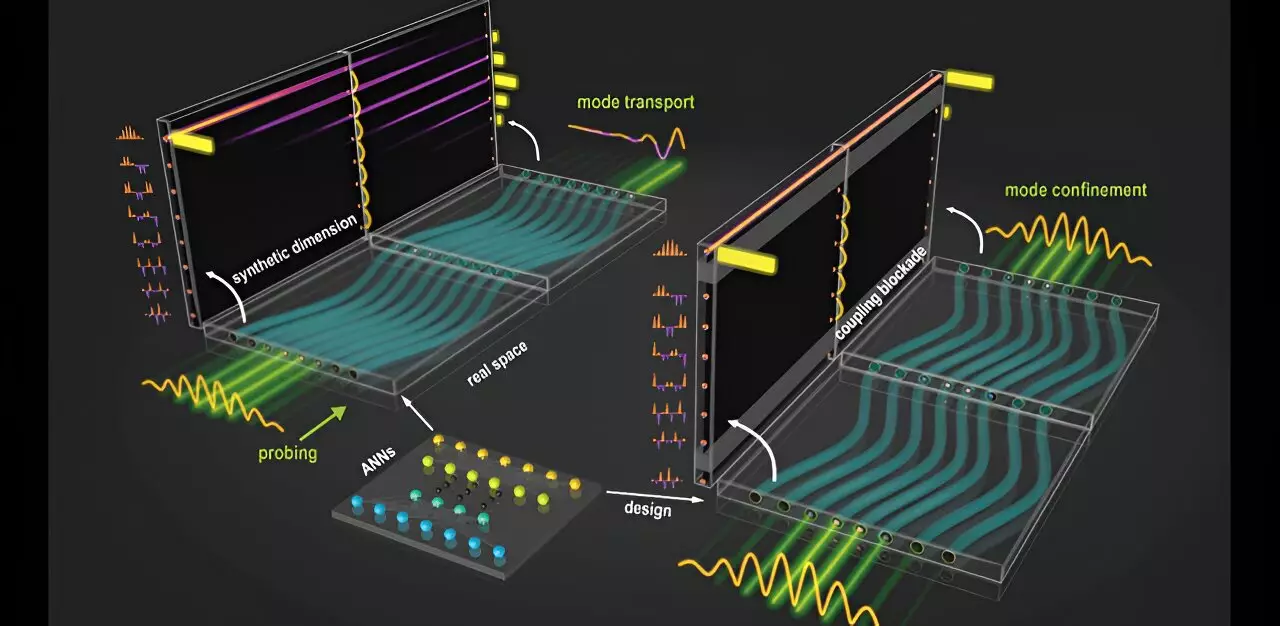In the fast-paced world of physics research, synthetic dimensions (SDs) have emerged as a cutting-edge area of study. These dimensions provide a unique opportunity to delve into phenomena that exist beyond the constraints of our traditional 3D geometrical space. The concept of synthetic dimensions has captured the interest of researchers, particularly in the field of topological photonics, as it presents the possibility of uncovering physics that is otherwise inaccessible in lower dimensions.
Researchers have put forth various theoretical frameworks to investigate and implement synthetic dimensions. Their goal is to leverage phenomena such as synthetic gauge fields, quantum Hall physics, discrete solitons, and topological phase transitions in dimensions higher than four. The successful realization of these proposals could offer groundbreaking insights into fundamental physics. One of the primary hurdles faced in conventional 3D space is the experimental implementation of complex lattice structures with specific couplings. Synthetic dimensions provide a solution to this challenge by offering a more accessible platform for creating elaborate networks of resonators with unique couplings.
The capability of synthetically creating intricate lattice structures has already led to significant advancements in the field of physics. Experimental demonstrations of non-Hermitian topological winding, parity-time symmetry, and other phenomena have been achieved using synthetic dimensions. Parameters such as frequency modes, spatial modes, and orbital angular momenta can be manipulated to construct SDs, opening up possibilities for applications in various fields, including optical communications and topological insulator lasers. The ultimate goal in this area of research is to construct a network of resonators where any pair of modes can be coupled in a controlled manner, leading to enhanced data transmission and energy harvesting efficiency.
A recent breakthrough in the field of synthetic dimensions was reported in Advanced Photonics, where an international team of researchers developed customizable arrays of waveguides to establish synthetic modal dimensions. This advancement enables effective control of light within a photonic system without the need for complex additional features like nonlinearity or non-Hermiticity. By modulating perturbations in propagations that match the differences between different modes of light, the researchers were able to design waveguide setups using artificial neural networks (ANNs). These ANNs were trained to create waveguide arrays with desired mode patterns, shedding light on how light propagates and gets confined within the arrays.
The implications of this work are substantial. By fine-tuning waveguide distances and frequencies, the researchers aim to optimize the design and fabrication of integrated photonic devices. This innovation holds promise for applications spanning from mode lasing to quantum optics and data transmission. The interplay between topological photonics and synthetic dimension photonics, empowered by ANNs, presents new avenues for discoveries that could pave the way for unprecedented materials and device applications.
The field of physics is rapidly evolving with the exploration of synthetic dimensions, offering a promising glimpse into the potential of higher-dimensional spaces and their applications in various industries. The collaboration between researchers worldwide continues to push the boundaries of what is possible in the realm of physics, opening up new opportunities for innovation and discovery.


Leave a Reply